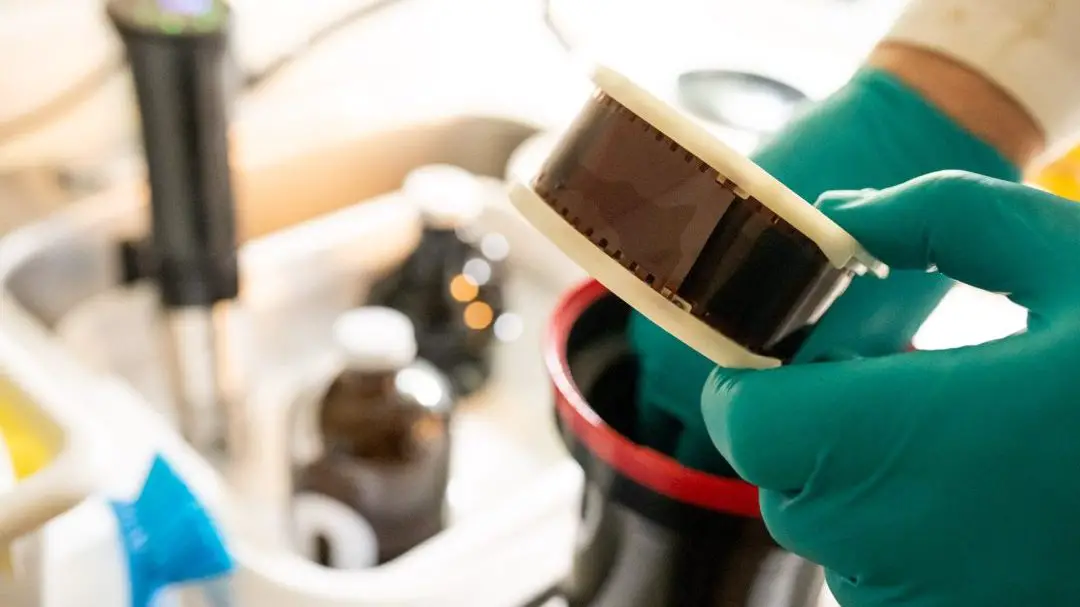The most infamous way cinema directors prove someone is a film photographer is to show them coming out of a red-lit darkroom. Because of that fact, most new film photographers think they need to use a darkroom to develop film at home.
A darkroom is not necessary for developing film at home if you have just a few tools. Film photographers use changing bags, or a pitch-black room to load film into light-proof developing tanks that can be used to develop film in daylight.
For the vast majority of film photographers, having a darkroom is no longer necessary since they are mostly only used to print film using an enlarger. In the age of digitizing film, which allows us to print faster, cheaper, and get more out of our film than ever before.
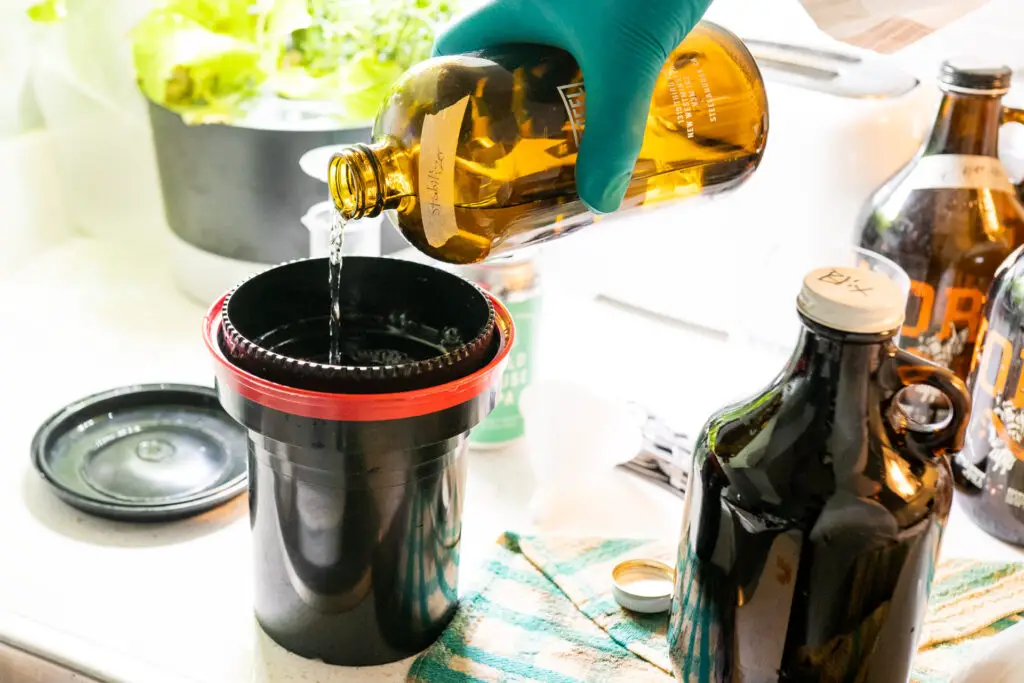
Using light-proof developing tanks
A developing tank is a sealable, light-proof tank that holds the film on reels. It allows the user to pour in film-developing chemicals.
The most common film-developing tanks are made by Paterson, which is the only company to continue producing these products after the digital revolution. The Paterson 2-reel tank (find it on Amazon here) is by far the most common because of its high-quality, low price point, and the fact that it comes with everything you need in a single kit.
The tank is able to develop 2 rolls of 35mm film, or 1 roll of medium format 120 film at a time. Paterson also makes tanks capable of developing up to 8 rolls of 35mm or 5 rolls of 120 format at once — perfect for saving time by developing in bulk.
The next most common type of film-developing tank system is made by Jobo, which creates tanks for automatic processing systems used by labs.
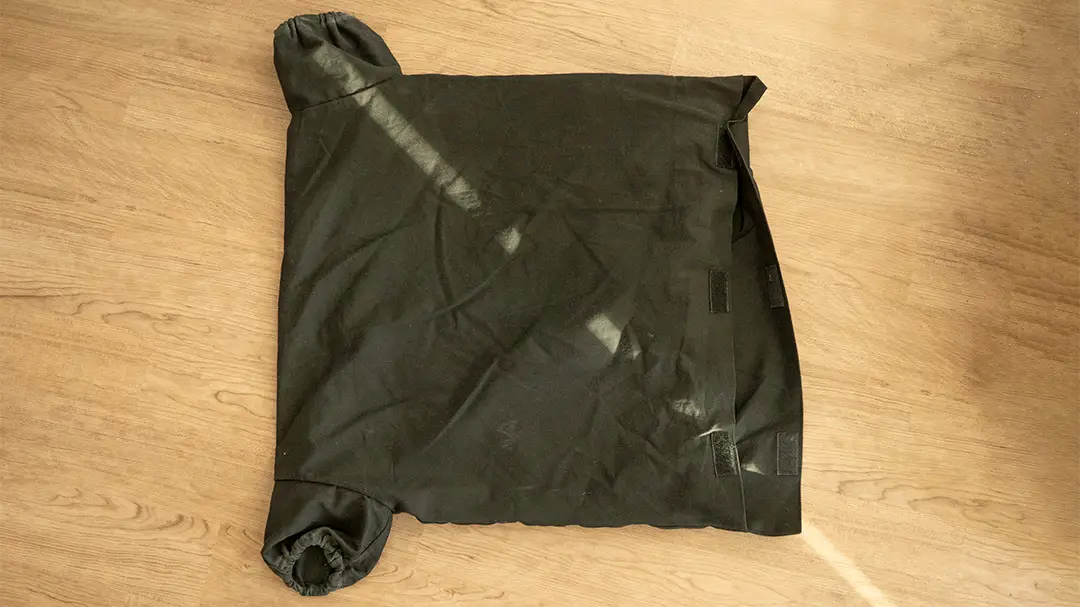
Using a light-proof film-changing bag
A film-changing bag is a light-proof bag with holes for your arms that allows you to handle film in complete darkness. Film-changing bags are the easiest way to load film into a developing tank without needing a pitch-black darkroom.
People also read:
Film-changing bags are a truly great thing to have since almost no bathroom doors seal completely.
I personally suggest using the largest film-changing bag you can find, since they tend to trap heat and moisture from your hands, which can make it difficult or impossible to load film onto plastic reels in a developing tank.
Here’s the one that I use on Amazon — it’s large, inexpensive, and is one of the best purchases I’ve ever made. These bags are thick and high-quality. I’ve been using mine for the last 3 years without any issues.
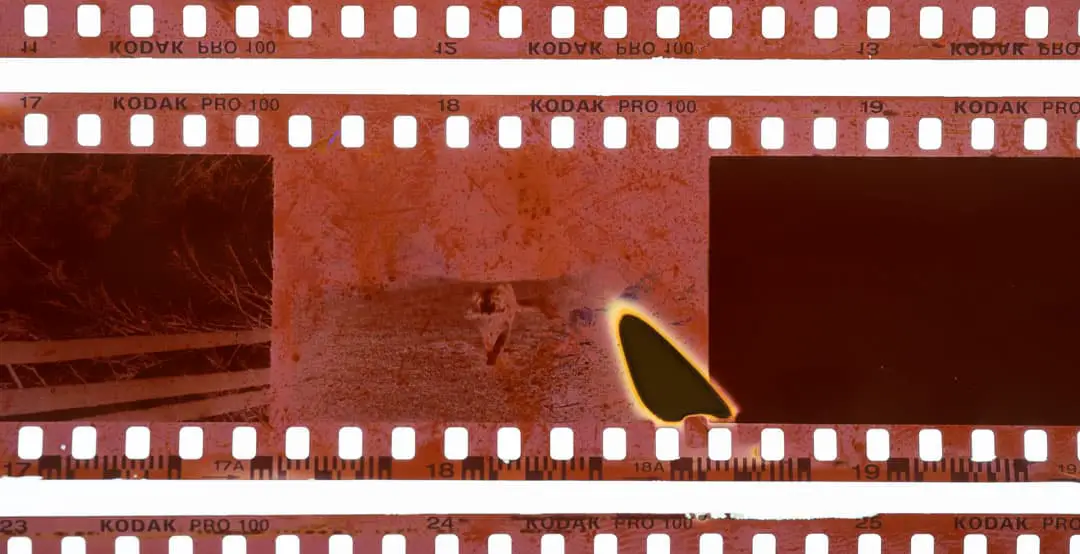
Film changing tents versus bags
Film-changing bags aren’t always the best solution. They are small, and there’s always a chance that your film will pick up dust and scratches inside, or get too hot from your hands in the small space, which causes issues that you can see in the image above.
When you need more space to carefully load your film, the best solution is a film-changing tent.
Film-changing tents are designed mostly for large format film photographers, who need extra space to properly load their film onto specially-designed reels. But they’re also helpful when using larger, bulk film-developing tanks like the massive Paterson 8-reel system.
The downside of film-changing tents is that they need a lot more space, take time to set up, and cost a lot more than a film-changing bag. And if you’d like to learn the easier ways to load Paterson reels, take a look at this article.
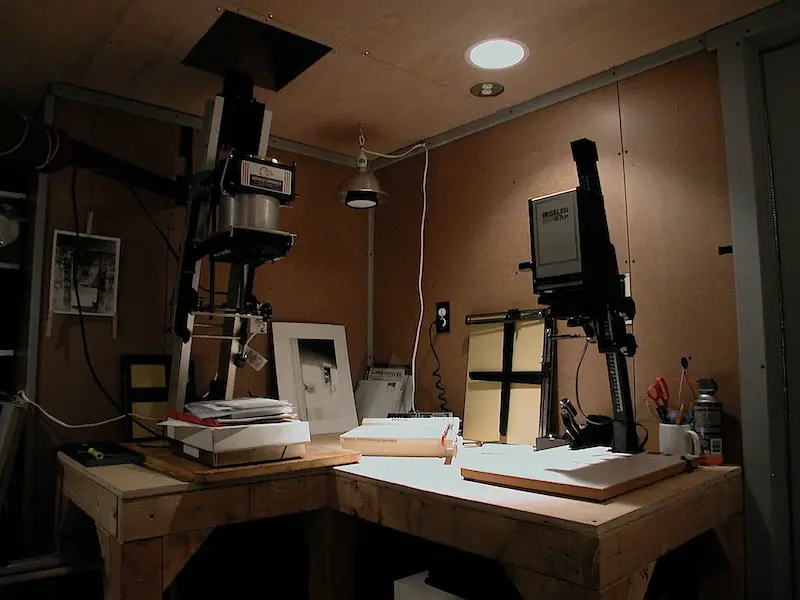
Darkroom tents: the latest advancement in portable darkroom tech
The last way to safely develop, and even print film at home is to use an Ilford Darkroom Tent. This is a full-size, light-tight tent that you can set up in your living room to print images.
It’s a truly revolutionary design that provides all the features you need (other than running water) in a small, portable space that works as well in an apartment as it does in a large family home.
These aren’t for everyone, but they can be a great solution to comfortably try printing film at home without making major renovations in the garage or basement.
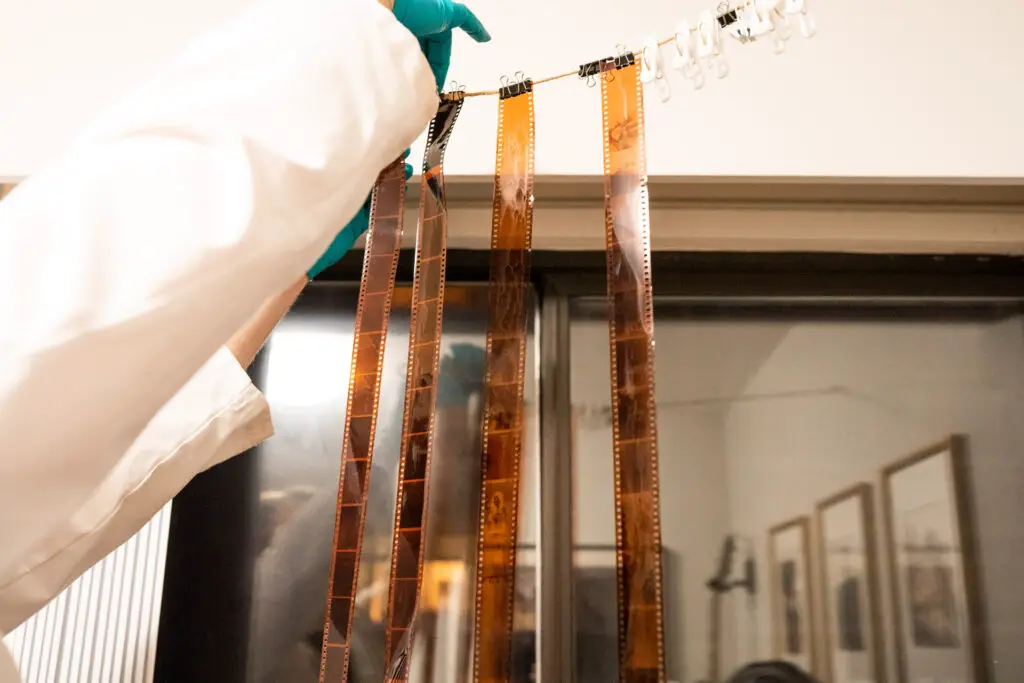
Final thoughts on how to develop film without a darkroom
There are a number of solutions that have been developed over the years to allow film photographers to develop film at home without needing a darkroom. It’s so easy, and can even be done in daylight using cheap tools, like a film-changing bag and Paterson developing tank!
If you’re ready to start developing your own film at home, you can learn the easy way to do it using this simple, Learn Film Photography guide to developing film at home.

By Daren
Daren is a journalist and wedding photographer based in Vancouver, B.C. He’s been taking personal and professional photos on film since 2017 and began developing and printing his own photos after wanting more control than what local labs could offer. Discover his newest publications at Soft Grain Books, or check out the print shop.

By Daren
Daren is a journalist and wedding photographer based in Vancouver, B.C. He’s been taking personal and professional photos on film since 2017 and began developing and printing his own photos after wanting more control than what local labs could offer. Discover his newest publications at Soft Grain Books, or check out the print shop.

